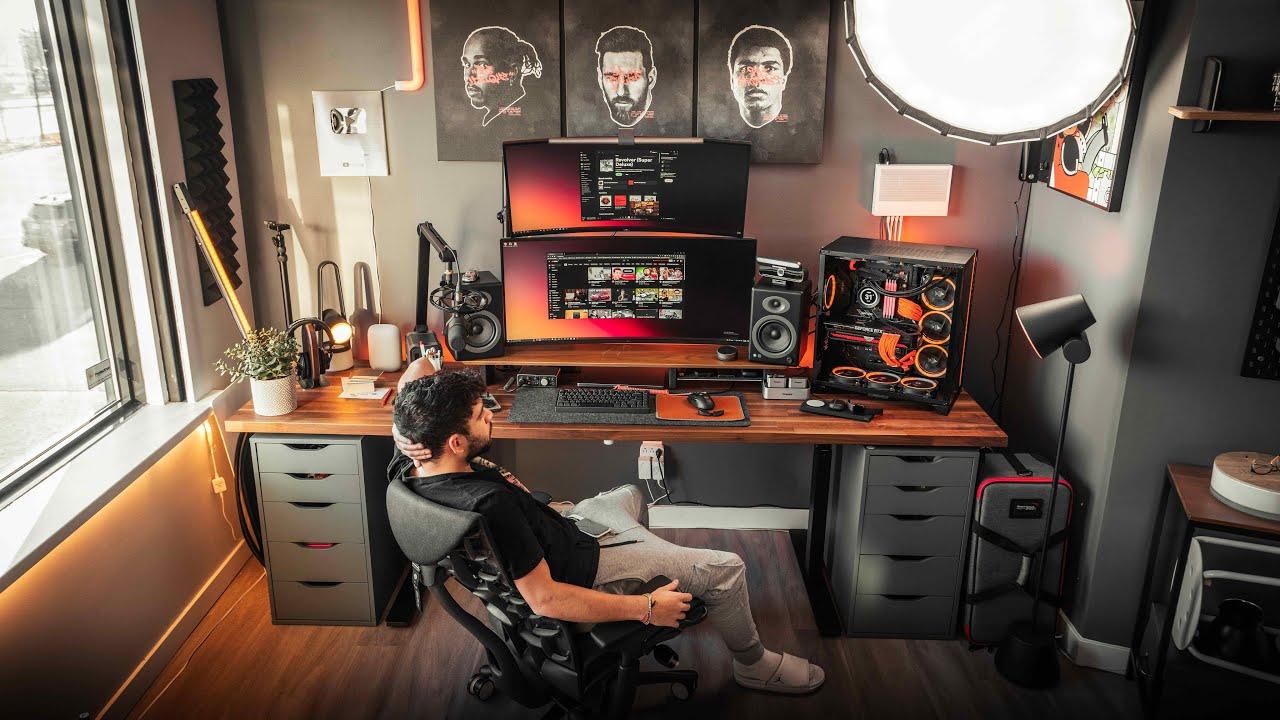Workspace Setup

Overview
Setting up an efficient and ergonomic workspace is crucial for enhancing productivity and maintaining good health. A proper workspace setup can help reduce body pains, eye strain, and mental stress. It plays a significant role in preventing musculoskeletal disorders caused by incorrect posture and repetitive movements. With an increasing number of people working from home or going through prolonged periods of studying, there’s a growing importance toward understanding how to create an optimal workspace.
Types
Different tasks require different types of workspace setups. Here are a few types:
1. Computer workstation: Ideal for individuals who spend hours working on a computer. This involves a comfortable chair, an ergonomic keyboard and mouse, and a well-placed monitor.
2. Standing workstation: This type of workstation allows individuals to work while standing which can help reduce prolonged sitting.
3. Customized workstation: A workstation meeting the specific requirements of a job role, task, or personal preference.
Causes
Health issues like back pain, eye strain, and repetitive strain injuries can be caused by a sub-optimal workspace set-up. Incorrect chair height, prolonged sitting, poor lighting, improper positioning of equipment, and excessive screen times are some common causes.
Symptoms
Improper workspace setup can lead to various symptoms:
1. Neck or back pain
2. Shoulder stiffness
3. Wrist pain or numbness
4. Eyes strain or headache
5. Science fatigues
If you’re experiencing any of these symptoms, it could be a sign that your workspace setup needs improvement.
Diagnosis
If you’re dealing with persistent discomfort despite your best attempts to adjust your workspace, you should consult a healthcare provider. They may refer you to specialists, such as optometrists for eye strain or physiotherapists for musculoskeletal concerns.
Treatment Options
Improving your workspace setup can alleviate many associated symptoms. Here are some tips:
1. Adjust your chair and desk so your feet are flat on the floor, and your hips and knees are at 90-degree angles.
2. Position screens at eye level and at least arm’s length away.
3. Use an ergonomic mouse and keyboard to support your wrists.
4. Ensure good lighting, reduce glare, and take regular breaks to rest your eyes.
Living with Workspace Setup
Adapting to an ergonomic workspace won’t happen overnight. Here are few tips for easing into it:
1. Regular breaks: Stand, stretch, and walk around every hour.
2. Good posture: Keep your back straight, shoulders relaxed, and avoid crossing legs.
3. Regular exercise: Strengthen your core muscle groups to support good posture.
When to Seek Help
If symptoms persist even after adjusting your workspace, or if you’re experiencing severe pain, weakness, or numbness, seek medical help immediately. A healthcare provider can diagnose any underlying conditions and recommend appropriate treatments or interventions.
Remember, an ergonomically correct workspace setup is one preventive step, and should not be used as a replacement for appropriate medical advice or treatment.
